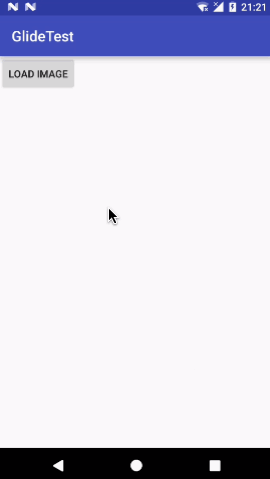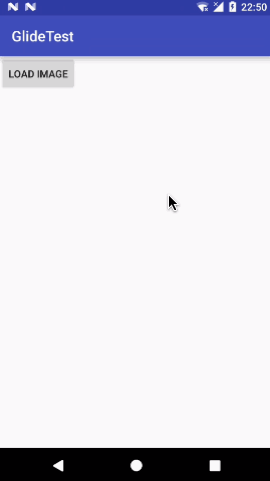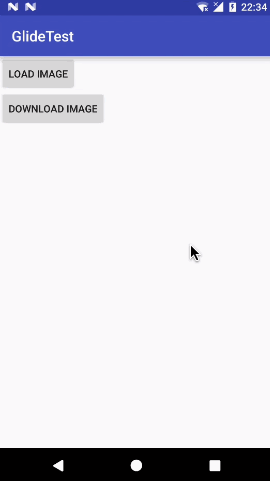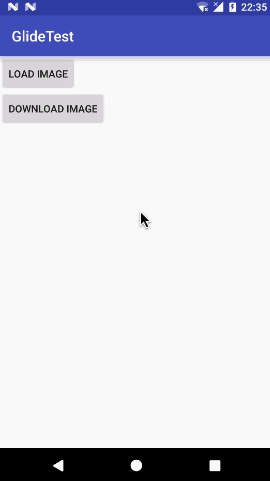在本系列的上一篇文章中,我们学习了Glide的基本用法,体验了这个图片加载框架的强大功能,以及它非常简便的API。还没有看过上一篇文章的朋友,建议先去阅读 Android图片加载框架*全解析(一),Glide的基本用法 。
在多数情况下,我们想要在界面上加载并展示一张图片只需要一行代码就能实现,如下所示:
Glide.with(this).load(url).into(imageView);
虽说只有这简简单单的一行代码,但大家可能不知道的是,Glide在背后帮我们默默执行了成吨的工作。这个形容词我想了很久,因为我觉得用非常多这个形容词不足以描述Glide背后的工作量,我查到的英文资料是用tons of work来进行形容的,因此我觉得这里使用成吨来形容更加贴切一些。
虽说我们在平时使用Glide的时候格外地简单和方便,但是知其然也要知其所以然。那么今天我们就来解析一下Glide的源码,看看它在这些简单用法的背后,到底执行了多么复杂的工作。
如何阅读源码
在开始解析Glide源码之前,我想先和大家谈一下该如何阅读源码,这个问题也是我平时被问得比较多的,因为很多人都觉得阅读源码是一件比较困难的事情。
那么阅读源码到底困难吗?这个当然主要还是要视具体的源码而定。比如同样是图片加载框架,我读Volley的源码时就感觉酣畅淋漓,并且对Volley的架构设计和代码质量深感佩服。读Glide的源码时却让我相当痛苦,代码*其难懂。当然这里我并不是说Glide的代码写得不好,只是因为Glide和复杂程度和Volley完全不是在一个量级上的。
那么,虽然源码的复杂程度是外在的不可变条件,但我们却可以通过一些技巧来提升自己阅读源码的能力。这里我和大家分享一下我平时阅读源码时所使用的技巧,简单概括就是八个字:抽丝剥茧、点到即止。应该认准一个功能点,然后去分析这个功能点是如何实现的。但只要去追寻主体的实现逻辑即可,千万不要试图去搞懂每一行代码都是什么意思,那样很容易会陷入到思维黑洞当中,而且越陷越深。因为这些庞大的系统都不是由一个人写出来的,每一行代码都想搞明白,就会感觉自己是在盲人摸象,永远也研究不透。如果只是去分析主体的实现逻辑,那么就有比较明确的目的性,这样阅读源码会更加轻松,也更加有成效。
而今天带大家阅读的Glide源码就非常适合使用这个技巧,因为Glide的源码太复杂了,千万不要试图去搞明白它每行代码的作用,而是应该只分析它的主体实现逻辑。那么我们本篇文章就先确立好一个目标,就是要通过阅读源码搞明白下面这行代码:
Glide.with(this).load(url).into(imageView);
到底是如何实现将一张网络图片展示到ImageView上面的。先将Glide的一整套图片加载机制的基本流程梳理清楚,然后我们再通过后面的几篇文章具体去了解Glide源码方方面面的细节。
准备好了吗?那么我们现在开始。
源码下载
既然是要阅读Glide的源码,那么我们自然需要先将Glide的源码下载下来。其实如果你是使用在build.gradle中添加依赖的方式将Glide引入到项目中的,那么源码自动就已经下载下来了,在Android Studio中就可以直接进行查看。
不过,使用添加依赖的方式引入的Glide,我们只能看到它的源码,但不能做任何的修改,如果你还需要修改它的源码的话,可以到GitHub上面将它的完整源码下载下来。
Glide的GitHub主页的地址是:https://github.com/bumptech/glide
不过在这个地址下载到的永远都是*新的源码,有可能还正在处于开发当中。而我们整个系列都是使用Glide 3.7.0这个版本来进行讲解的,因此如果你需要专门去下载3.7.0版本的源码,可以到这个地址进行下载:https://github.com/bumptech/glide/tree/v3.7.0
开始阅读
我们在上一篇文章中已经学习过了,Glide*基本的用法就是三步走:先with(),再load(),*后into()。那么我们开始一步步阅读这三步走的源码,先从with()看起。
1. with()
with()方法是Glide类中的一组静态方法,它有好几个方法重载,我们来看一下Glide类中所有with()方法的方法重载:
public class Glide {
...
public static RequestManager with(Context context) {
RequestManagerRetriever retriever = RequestManagerRetriever.get();
return retriever.get(context);
}
public static RequestManager with(Activity activity) {
RequestManagerRetriever retriever = RequestManagerRetriever.get();
return retriever.get(activity);
}
public static RequestManager with(FragmentActivity activity) {
RequestManagerRetriever retriever = RequestManagerRetriever.get();
return retriever.get(activity);
}
@TargetApi(Build.VERSION_CODES.HONEYCOMB)
public static RequestManager with(android.app.Fragment fragment) {
RequestManagerRetriever retriever = RequestManagerRetriever.get();
return retriever.get(fragment);
}
public static RequestManager with(Fragment fragment) {
RequestManagerRetriever retriever = RequestManagerRetriever.get();
return retriever.get(fragment);
}
}
可以看到,with()方法的重载种类非常多,既可以传入Activity,也可以传入Fragment或者是Context。每一个with()方法重载的代码都非常简单,都是先调用RequestManagerRetriever的静态get()方法得到一个RequestManagerRetriever对象,这个静态get()方法就是一个单例实现,没什么需要解释的。然后再调用RequestManagerRetriever的实例get()方法,去获取RequestManager对象。
而RequestManagerRetriever的实例get()方法中的逻辑是什么样的呢?我们一起来看一看:
public class RequestManagerRetriever implements Handler.Callback {
private static final RequestManagerRetriever INSTANCE = new RequestManagerRetriever();
private volatile RequestManager applicationManager;
...
public static RequestManagerRetriever get() {
return INSTANCE;
}
private RequestManager getApplicationManager(Context context) {
上述代码虽然看上去逻辑有点复杂,但是将它们梳理清楚后还是很简单的。RequestManagerRetriever类中看似有很多个get()方法的重载,什么Context参数,Activity参数,Fragment参数等等,实际上只有两种情况而已,即传入Application类型的参数,和传入非Application类型的参数。
我们先来看传入Application参数的情况。如果在Glide.with()方法中传入的是一个Application对象,那么这里就会调用带有Context参数的get()方法重载,然后会在第44行调用getApplicationManager()方法来获取一个RequestManager对象。其实这是*简单的一种情况,因为Application对象的生命周期即应用程序的生命周期,因此Glide并不需要做什么特殊的处理,它自动就是和应用程序的生命周期是同步的,如果应用程序关闭的话,Glide的加载也会同时终止。
接下来我们看传入非Application参数的情况。不管你在Glide.with()方法中传入的是Activity、FragmentActivity、v4包下的Fragment、还是app包下的Fragment,*终的流程都是一样的,那就是会向当前的Activity当中添加一个隐藏的Fragment。具体添加的逻辑是在上述代码的第117行和第141行,分别对应的app包和v4包下的两种Fragment的情况。那么这里为什么要添加一个隐藏的Fragment呢?因为Glide需要知道加载的生命周期。很简单的一个道理,如果你在某个Activity上正在加载着一张图片,结果图片还没加载出来,Activity就被用户关掉了,那么图片还应该继续加载吗?当然不应该。可是Glide并没有办法知道Activity的生命周期,于是Glide就使用了添加隐藏Fragment的这种小技巧,因为Fragment的生命周期和Activity是同步的,如果Activity被销毁了,Fragment是可以监听到的,这样Glide就可以捕获这个事件并停止图片加载了。
这里额外再提一句,从第48行代码可以看出,如果我们是在非主线程当中使用的Glide,那么不管你是传入的Activity还是Fragment,都会被强制当成Application来处理。不过其实这就属于是在分析代码的细节了,本篇文章我们将会把目光主要放在Glide的主线工作流程上面,后面不会过多去分析这些细节方面的内容。
总体来说,*个with()方法的源码还是比较好理解的。其实就是为了得到一个RequestManager对象而已,然后Glide会根据我们传入with()方法的参数来确定图片加载的生命周期,并没有什么特别复杂的逻辑。不过复杂的逻辑还在后面等着我们呢,接下来我们开始分析第二步,load()方法。
2. load()
由于with()方法返回的是一个RequestManager对象,那么很容易就能想到,load()方法是在RequestManager类当中的,所以说我们首先要看的就是RequestManager这个类。不过在上一篇文章中我们学过,Glide是支持图片URL字符串、图片本地路径等等加载形式的,因此RequestManager中也有很多个load()方法的重载。但是这里我们不可能把每个load()方法的重载都看一遍,因此我们就只选其中一个加载图片URL字符串的load()方法来进行研究吧。
RequestManager类的简化代码如下所示:
public class RequestManager implements LifecycleListener {
...
public DrawableTypeRequest<String> load(String string) {
return (DrawableTypeRequest<String>) fromString().load(string);
}
public DrawableTypeRequest<String> fromString() {
return loadGeneric(String.class);
}
private <T> DrawableTypeRequest<T> loadGeneric(Class<T> modelClass) {
ModelLoader<T, InputStream> streamModelLoader = Glide.buildStreamModelLoader(modelClass, context);
ModelLoader<T, ParcelFileDescriptor> fileDescriptorModelLoader =
Glide.buildFileDescriptorModelLoader(modelClass, context);
if (modelClass != null && streamModelLoader == null && fileDescriptorModelLoader == null) {
throw new IllegalArgumentException("Unknown type " + modelClass + ". You must provide a Model of a type for"
+ " which there is a registered ModelLoader, if you are using a custom model, you must first call"
+ " Glide#register with a ModelLoaderFactory for your custom model class");
}
return optionsApplier.apply(
new DrawableTypeRequest<T>(modelClass, streamModelLoader, fileDescriptorModelLoader, context,
glide, requestTracker, lifecycle, optionsApplier));
}
...
}
RequestManager类的代码是非常多的,但是经过我这样简化之后,看上去就比较清爽了。在我们只探究加载图片URL字符串这一个load()方法的情况下,那么比较重要的方法就只剩下上述代码中的这三个方法。
那么我们先来看load()方法,这个方法中的逻辑是非常简单的,只有一行代码,就是先调用了fromString()方法,再调用load()方法,然后把传入的图片URL地址传进去。而fromString()方法也*为简单,就是调用了loadGeneric()方法,并且指定参数为String.class,因为load()方法传入的是一个字符串参数。那么看上去,好像主要的工作都是在loadGeneric()方法中进行的了。
其实loadGeneric()方法也没几行代码,这里分别调用了Glide.buildStreamModelLoader()方法和Glide.buildFileDescriptorModelLoader()方法来获得ModelLoader对象。ModelLoader对象是用于加载图片的,而我们给load()方法传入不同类型的参数,这里也会得到不同的ModelLoader对象。不过buildStreamModelLoader()方法内部的逻辑还是蛮复杂的,这里就不展开介绍了,要不然篇幅实在收不住,感兴趣的话你可以自己研究。由于我们刚才传入的参数是String.class,因此*终得到的是StreamStringLoader对象,它是实现了ModelLoader接口的。
*后我们可以看到,loadGeneric()方法是要返回一个DrawableTypeRequest对象的,因此在loadGeneric()方法的*后又去new了一个DrawableTypeRequest对象,然后把刚才获得的ModelLoader对象,还有一大堆杂七杂八的东西都传了进去。具体每个参数的含义和作用就不解释了,我们只看主线流程。
那么这个DrawableTypeRequest的作用是什么呢?我们来看下它的源码,如下所示:
public class DrawableTypeRequest<ModelType> extends DrawableRequestBuilder<ModelType> implements DownloadOptions {
private final ModelLoader<ModelType, InputStream> streamModelLoader;
private final ModelLoader<ModelType, ParcelFileDescriptor> fileDescriptorModelLoader;
private final RequestManager.OptionsApplier optionsApplier;
private static <A, Z, R> FixedLoadProvider<A, ImageVideoWrapper, Z, R> buildProvider(Glide glide,
ModelLoader<A, InputStream> streamModelLoader,
ModelLoader<A, ParcelFileDescriptor> fileDescriptorModelLoader, Class<Z> resourceClass,
Class<R> transcodedClass,
ResourceTranscoder<Z, R> transcoder) {
if (streamModelLoader == null && fileDescriptorModelLoader == null) {
return null;
}
if (transcoder == null) {
transcoder = glide.buildTranscoder(resourceClass, transcodedClass);
}
DataLoadProvider<ImageVideoWrapper, Z> dataLoadProvider = glide.buildDataProvider(ImageVideoWrapper.class,
resourceClass);
ImageVideoModelLoader<A> modelLoader = new ImageVideoModelLoader<A>(streamModelLoader,
fileDescriptorModelLoader);
return new FixedLoadProvider<A, ImageVideoWrapper, Z, R>(modelLoader, transcoder, dataLoadProvider);
}
DrawableTypeRequest(Class<ModelType> modelClass, ModelLoader<ModelType, InputStream> streamModelLoader,
ModelLoader<ModelType, ParcelFileDescriptor> fileDescriptorModelLoader, Context context, Glide glide,
RequestTracker requestTracker, Lifecycle lifecycle, RequestManager.OptionsApplier optionsApplier) {
super(context, modelClass,
buildProvider(glide, streamModelLoader, fileDescriptorModelLoader, GifBitmapWrapper.class,
GlideDrawable.class, null),
glide, requestTracker, lifecycle);
this.streamModelLoader = streamModelLoader;
this.fileDescriptorModelLoader = fileDescriptorModelLoader;
this.optionsApplier = optionsApplier;
}
public BitmapTypeRequest<ModelType> asBitmap() {
return optionsApplier.apply(new BitmapTypeRequest<ModelType>(this, streamModelLoader,
fileDescriptorModelLoader, optionsApplier));
}
public GifTypeRequest<ModelType> asGif() {
return optionsApplier.apply(new GifTypeRequest<ModelType>(this, streamModelLoader, optionsApplier));
}
...
}
这个类中的代码本身就不多,我只是稍微做了一点简化。可以看到,*主要的就是它提供了asBitmap()和asGif()这两个方法。这两个方法我们在上一篇文章当中都是学过的,分别是用于强制指定加载静态图片和动态图片。而从源码中可以看出,它们分别又创建了一个BitmapTypeRequest和GifTypeRequest,如果没有进行强制指定的话,那默认就是使用DrawableTypeRequest。
好的,那么我们再回到RequestManager的load()方法中。刚才已经分析过了,fromString()方法会返回一个DrawableTypeRequest对象,接下来会调用这个对象的load()方法,把图片的URL地址传进去。但是我们刚才看到了,DrawableTypeRequest中并没有load()方法,那么很容易就能猜想到,load()方法是在父类当中的。
DrawableTypeRequest的父类是DrawableRequestBuilder,我们来看下这个类的源码:
public class DrawableRequestBuilder<ModelType>
extends GenericRequestBuilder<ModelType, ImageVideoWrapper, GifBitmapWrapper, GlideDrawable>
implements BitmapOptions, DrawableOptions {
DrawableRequestBuilder(Context context, Class<ModelType> modelClass,
LoadProvider<ModelType, ImageVideoWrapper, GifBitmapWrapper, GlideDrawable> loadProvider, Glide glide,
RequestTracker requestTracker, Lifecycle lifecycle) {
super(context, modelClass, loadProvider, GlideDrawable.class, glide, requestTracker, lifecycle);
DrawableRequestBuilder中有很多个方法,这些方法其实就是Glide*大多数的API了。里面有不少我们在上篇文章中已经用过了,比如说placeholder()方法、error()方法、diskCacheStrategy()方法、override()方法等。当然还有很多暂时还没用到的API,我们会在后面的文章当中学习。
到这里,第二步load()方法也就分析结束了。为什么呢?因为你会发现DrawableRequestBuilder类中有一个into()方法(上述代码第220行),也就是说,*终load()方法返回的其实就是一个DrawableTypeRequest对象。那么接下来我们就要进行第三步了,分析into()方法中的逻辑。
3. into()
如果说前面两步都是在准备开胃小菜的话,那么现在终于要进入主菜了,因为into()方法也是整个Glide图片加载流程中逻辑*复杂的地方。
不过从刚才的代码来看,into()方法中并没有任何逻辑,只有一句super.into(view)。那么很显然,into()方法的具体逻辑都是在DrawableRequestBuilder的父类当中了。
DrawableRequestBuilder的父类是GenericRequestBuilder,我们来看一下GenericRequestBuilder类中的into()方法,如下所示:
public Target<TranscodeType> into(ImageView view) {
Util.assertMainThread();
if (view == null) {
throw new IllegalArgumentException("You must pass in a non null View");
}
if (!isTransformationSet && view.getScaleType() != null) {
switch (view.getScaleType()) {
case CENTER_CROP:
applyCenterCrop();
break;
case FIT_CENTER:
case FIT_START:
case FIT_END:
applyFitCenter();
break;
这里前面一大堆的判断逻辑我们都可以先不用管,等到后面文章讲transform的时候会再进行解释,现在我们只需要关注*后一行代码。*后一行代码先是调用了glide.buildImageViewTarget()方法,这个方法会构建出一个Target对象,Target对象则是用来*终展示图片用的,如果我们跟进去的话会看到如下代码:
<R> Target<R> buildImageViewTarget(ImageView imageView, Class<R> transcodedClass) {
return imageViewTargetFactory.buildTarget(imageView, transcodedClass);
}
这里其实又是调用了ImageViewTargetFactory的buildTarget()方法,我们继续跟进去,代码如下所示:
public class ImageViewTargetFactory {
@SuppressWarnings("unchecked")
public <Z> Target<Z> buildTarget(ImageView view, Class<Z> clazz) {
if (GlideDrawable.class.isAssignableFrom(clazz)) {
return (Target<Z>) new GlideDrawableImageViewTarget(view);
} else if (Bitmap.class.equals(clazz)) {
return (Target<Z>) new BitmapImageViewTarget(view);
} else if (Drawable.class.isAssignableFrom(clazz)) {
return (Target<Z>) new DrawableImageViewTarget(view);
} else {
throw new IllegalArgumentException("Unhandled class: " + clazz
+ ", try .as*(Class).transcode(ResourceTranscoder)");
}
}
可以看到,在buildTarget()方法中会根据传入的class参数来构建不同的Target对象。那如果你要分析这个class参数是从哪儿传过来的,这可有得你分析了,简单起见我直接帮大家梳理清楚。这个class参数其实基本上只有两种情况,如果你在使用Glide加载图片的时候调用了asBitmap()方法,那么这里就会构建出BitmapImageViewTarget对象,否则的话构建的都是GlideDrawableImageViewTarget对象。至于上述代码中的DrawableImageViewTarget对象,这个通常都是用不到的,我们可以暂时不用管它。
也就是说,通过glide.buildImageViewTarget()方法,我们构建出了一个GlideDrawableImageViewTarget对象。那现在回到刚才into()方法的*后一行,可以看到,这里又将这个参数传入到了GenericRequestBuilder另一个接收Target对象的into()方法当中了。我们来看一下这个into()方法的源码:
public <Y extends Target<TranscodeType>> Y into(Y target) {
Util.assertMainThread();
if (target == null) {
throw new IllegalArgumentException("You must pass in a non null Target");
}
if (!isModelSet) {
throw new IllegalArgumentException("You must first set a model (try #load())");
}
Request previous = target.getRequest();
if (previous != null) {
previous.clear();
requestTracker.removeRequest(previous);
previous.recycle();
}
Request request = buildRequest(target);
target.setRequest(request);
lifecycle.addListener(target);
requestTracker.runRequest(request);
return target;
}
这里我们还是只抓核心代码,其实只有两行是*关键的,第15行调用buildRequest()方法构建出了一个Request对象,还有第18行来执行这个Request。
Request是用来发出加载图片请求的,它是Glide中非常关键的一个组件。我们先来看buildRequest()方法是如何构建Request对象的:
private Request buildRequest(Target<TranscodeType> target) {
if (priority == null) {
priority = Priority.NORMAL;
}
return buildRequestRecursive(target, null);
}
private Request buildRequestRecursive(Target<TranscodeType> target, ThumbnailRequestCoordinator parentCoordinator) {
if (thumbnailRequestBuilder != null) {
if (isThumbnailBuilt) {
throw new IllegalStateException("You cannot use a request as both the main request and a thumbnail, "
+ "consider using clone() on the request(s) passed to thumbnail()");
}
可以看到,buildRequest()方法的内部其实又调用了buildRequestRecursive()方法,而buildRequestRecursive()方法中的代码虽然有点长,但是其中90%的代码都是在处理缩略图的。如果我们只追主线流程的话,那么只需要看第47行代码就可以了。这里调用了obtainRequest()方法来获取一个Request对象,而obtainRequest()方法中又去调用了GenericRequest的obtain()方法。注意这个obtain()方法需要传入非常多的参数,而其中很多的参数我们都是比较熟悉的,像什么placeholderId、errorPlaceholder、diskCacheStrategy等等。因此,我们就有理由猜测,刚才在load()方法中调用的所有API,其实都是在这里组装到Request对象当中的。那么我们进入到这个GenericRequest的obtain()方法瞧一瞧:
public final class GenericRequest<A, T, Z, R> implements Request, SizeReadyCallback,
ResourceCallback {
...
public static <A, T, Z, R> GenericRequest<A, T, Z, R> obtain(
LoadProvider<A, T, Z, R> loadProvider,
A model,
Key signature,
Context context,
Priority priority,
Target<R> target,
float sizeMultiplier,
Drawable placeholderDrawable,
int placeholderResourceId,
Drawable errorDrawable,
int errorResourceId,
Drawable fallbackDrawable,
int fallbackResourceId,
RequestListener<? super A, R> requestListener,
RequestCoordinator requestCoordinator,
Engine engine,
Transformation<Z> transformation,
Class<R> transcodeClass,
boolean isMemoryCacheable,
GlideAnimationFactory<R> animationFactory,
int overrideWidth,
int overrideHeight,
DiskCacheStrategy diskCacheStrategy) {
@SuppressWarnings("unchecked")
GenericRequest<A, T, Z, R> request = (GenericRequest<A, T, Z, R>) REQUEST_POOL.poll();
if (request == null) {
request = new GenericRequest<A, T, Z, R>();
}
request.init(loadProvider,
model,
signature,
context,
priority,
target,
sizeMultiplier,
placeholderDrawable,
placeholderResourceId,
errorDrawable,
errorResourceId,
fallbackDrawable,
fallbackResourceId,
requestListener,
requestCoordinator,
engine,
transformation,
transcodeClass,
isMemoryCacheable,
animationFactory,
overrideWidth,
overrideHeight,
diskCacheStrategy);
return request;
}
...
}
可以看到,这里在第33行去new了一个GenericRequest对象,并在*后一行返回,也就是说,obtain()方法实际上获得的就是一个GenericRequest对象。另外这里又在第35行调用了GenericRequest的init(),里面主要就是一些赋值的代码,将传入的这些参数赋值到GenericRequest的成员变量当中,我们就不再跟进去看了。
好,那现在解决了构建Request对象的问题,接下来我们看一下这个Request对象又是怎么执行的。回到刚才的into()方法,你会发现在第18行调用了requestTracker.runRequest()方法来去执行这个Request,那么我们跟进去瞧一瞧,如下所示:
public void runRequest(Request request) {
requests.add(request);
if (!isPaused) {
request.begin();
} else {
pendingRequests.add(request);
}
}
这里有一个简单的逻辑判断,就是先判断Glide当前是不是处理暂停状态,如果不是暂停状态就调用Request的begin()方法来执行Request,否则的话就先将Request添加到待执行队列里面,等暂停状态解除了之后再执行。
暂停请求的功能仍然不是这篇文章所关心的,这里就直接忽略了,我们重点来看这个begin()方法。由于当前的Request对象是一个GenericRequest,因此这里就需要看GenericRequest中的begin()方法了,如下所示:
@Override
public void begin() {
startTime = LogTime.getLogTime();
if (model == null) {
onException(null);
return;
}
status = Status.WAITING_FOR_SIZE;
if (Util.isValidDimensions(overrideWidth, overrideHeight)) {
onSizeReady(overrideWidth, overrideHeight);
} else {
target.getSize(this);
}
if (!isComplete() && !isFailed() && canNotifyStatusChanged()) {
target.onLoadStarted(getPlaceholderDrawable());
}
if (Log.isLoggable(TAG, Log.VERBOSE)) {
logV("finished run method in " + LogTime.getElapsedMillis(startTime));
}
}
这里我们来注意几个细节,首先如果model等于null,model也就是我们在第二步load()方法中传入的图片URL地址,这个时候会调用onException()方法。如果你跟到onException()方法里面去看看,你会发现它*终会调用到一个setErrorPlaceholder()当中,如下所示:
private void setErrorPlaceholder(Exception e) {
if (!canNotifyStatusChanged()) {
return;
}
Drawable error = model == null ? getFallbackDrawable() : null;
if (error == null) {
error = getErrorDrawable();
}
if (error == null) {
error = getPlaceholderDrawable();
}
target.onLoadFailed(e, error);
}
这个方法中会先去获取一个error的占位图,如果获取不到的话会再去获取一个loading占位图,然后调用target.onLoadFailed()方法并将占位图传入。那么onLoadFailed()方法中做了什么呢?我们看一下:
public abstract class ImageViewTarget<Z> extends ViewTarget<ImageView, Z> implements GlideAnimation.ViewAdapter {
...
@Override
public void onLoadStarted(Drawable placeholder) {
view.setImageDrawable(placeholder);
}
@Override
public void onLoadFailed(Exception e, Drawable errorDrawable) {
view.setImageDrawable(errorDrawable);
}
...
}
很简单,其实就是将这张error占位图显示到ImageView上而已,因为现在出现了异常,没办法展示正常的图片了。而如果你仔细看下刚才begin()方法的第15行,你会发现它又调用了一个target.onLoadStarted()方法,并传入了一个loading占位图,在也就说,在图片请求开始之前,会先使用这张占位图代替*终的图片显示。这也是我们在上一篇文章中学过的placeholder()和error()这两个占位图API底层的实现原理。
好,那么我们继续回到begin()方法。刚才讲了占位图的实现,那么具体的图片加载又是从哪里开始的呢?是在begin()方法的第10行和第12行。这里要分两种情况,一种是你使用了override() API为图片指定了一个固定的宽高,一种是没有指定。如果指定了的话,就会执行第10行代码,调用onSizeReady()方法。如果没指定的话,就会执行第12行代码,调用target.getSize()方法。这个target.getSize()方法的内部会根据ImageView的layout_width和layout_height值做一系列的计算,来算出图片应该的宽高。具体的计算细节我就不带着大家分析了,总之在计算完之后,它也会调用onSizeReady()方法。也就是说,不管是哪种情况,*终都会调用到onSizeReady()方法,在这里进行下一步操作。那么我们跟到这个方法里面来:
@Override
public void onSizeReady(int width, int height) {
if (Log.isLoggable(TAG, Log.VERBOSE)) {
logV("Got onSizeReady in " + LogTime.getElapsedMillis(startTime));
}
if (status != Status.WAITING_FOR_SIZE) {
return;
}
status = Status.RUNNING;
width = Math.round(sizeMultiplier * width);
height = Math.round(sizeMultiplier * height);
ModelLoader<A, T> modelLoader = loadProvider.getModelLoader();
final DataFetcher<T> dataFetcher = modelLoader.getResourceFetcher(model, width, height);
if (dataFetcher == null) {
onException(new Exception("Failed to load model: \'" + model + "\'"));
return;
}
ResourceTranscoder<Z, R> transcoder = loadProvider.getTranscoder();
if (Log.isLoggable(TAG, Log.VERBOSE)) {
logV("finished setup for calling load in " + LogTime.getElapsedMillis(startTime));
}
loadedFromMemoryCache = true;
loadStatus = engine.load(signature, width, height, dataFetcher, loadProvider, transformation, transcoder,
priority, isMemoryCacheable, diskCacheStrategy, this);
loadedFromMemoryCache = resource != null;
if (Log.isLoggable(TAG, Log.VERBOSE)) {
logV("finished onSizeReady in " + LogTime.getElapsedMillis(startTime));
}
}
从这里开始,真正复杂的地方来了,我们需要慢慢进行分析。先来看一下,在第12行调用了loadProvider.getModelLoader()方法,那么我们*个要搞清楚的就是,这个loadProvider是什么?要搞清楚这点,需要先回到第二步的load()方法当中。还记得load()方法是返回一个DrawableTypeRequest对象吗?刚才我们只是分析了DrawableTypeRequest当中的asBitmap()和asGif()方法,并没有仔细看它的构造函数,现在我们重新来看一下DrawableTypeRequest类的构造函数:
public class DrawableTypeRequest<ModelType> extends DrawableRequestBuilder<ModelType> implements DownloadOptions {
private final ModelLoader<ModelType, InputStream> streamModelLoader;
private final ModelLoader<ModelType, ParcelFileDescriptor> fileDescriptorModelLoader;
private final RequestManager.OptionsApplier optionsApplier;
private static <A, Z, R> FixedLoadProvider<A, ImageVideoWrapper, Z, R> buildProvider(Glide glide,
ModelLoader<A, InputStream> streamModelLoader,
ModelLoader<A, ParcelFileDescriptor> fileDescriptorModelLoader, Class<Z> resourceClass,
Class<R> transcodedClass,
ResourceTranscoder<Z, R> transcoder) {
if (streamModelLoader == null && fileDescriptorModelLoader == null) {
return null;
}
if (transcoder == null) {
transcoder = glide.buildTranscoder(resourceClass, transcodedClass);
}
DataLoadProvider<ImageVideoWrapper, Z> dataLoadProvider = glide.buildDataProvider(ImageVideoWrapper.class,
resourceClass);
ImageVideoModelLoader<A> modelLoader = new ImageVideoModelLoader<A>(streamModelLoader,
fileDescriptorModelLoader);
return new FixedLoadProvider<A, ImageVideoWrapper, Z, R>(modelLoader, transcoder, dataLoadProvider);
}
DrawableTypeRequest(Class<ModelType> modelClass, ModelLoader<ModelType, InputStream> streamModelLoader,
ModelLoader<ModelType, ParcelFileDescriptor> fileDescriptorModelLoader, Context context, Glide glide,
RequestTracker requestTracker, Lifecycle lifecycle, RequestManager.OptionsApplier optionsApplier) {
super(context, modelClass,
buildProvider(glide, streamModelLoader, fileDescriptorModelLoader, GifBitmapWrapper.class,
GlideDrawable.class, null),
glide, requestTracker, lifecycle);
this.streamModelLoader = streamModelLoader;
this.fileDescriptorModelLoader = fileDescriptorModelLoader;
this.optionsApplier = optionsApplier;
}
...
}
可以看到,这里在第29行,也就是构造函数中,调用了一个buildProvider()方法,并把streamModelLoader和fileDescriptorModelLoader等参数传入到这个方法中,这两个ModelLoader就是之前在loadGeneric()方法中构建出来的。
那么我们再来看一下buildProvider()方法里面做了什么,在第16行调用了glide.buildTranscoder()方法来构建一个ResourceTranscoder,它是用于对图片进行转码的,由于ResourceTranscoder是一个接口,这里实际会构建出一个GifBitmapWrapperDrawableTranscoder对象。
接下来在第18行调用了glide.buildDataProvider()方法来构建一个DataLoadProvider,它是用于对图片进行编解码的,由于DataLoadProvider是一个接口,这里实际会构建出一个ImageVideoGifDrawableLoadProvider对象。
然后在第20行,new了一个ImageVideoModelLoader的实例,并把之前loadGeneric()方法中构建的两个ModelLoader封装到了ImageVideoModelLoader当中。
*后,在第22行,new出一个FixedLoadProvider,并把刚才构建的出来的GifBitmapWrapperDrawableTranscoder、ImageVideoModelLoader、ImageVideoGifDrawableLoadProvider都封装进去,这个也就是onSizeReady()方法中的loadProvider了。
好的,那么我们回到onSizeReady()方法中,在onSizeReady()方法的第12行和第18行,分别调用了loadProvider的getModelLoader()方法和getTranscoder()方法,那么得到的对象也就是刚才我们分析的ImageVideoModelLoader和GifBitmapWrapperDrawableTranscoder了。而在第13行,又调用了ImageVideoModelLoader的getResourceFetcher()方法,这里我们又需要跟进去瞧一瞧了,代码如下所示:
public class ImageVideoModelLoader<A> implements ModelLoader<A, ImageVideoWrapper> {
private static final String TAG = "IVML";
private final ModelLoader<A, InputStream> streamLoader;
private final ModelLoader<A, ParcelFileDescriptor> fileDescriptorLoader;
public ImageVideoModelLoader(ModelLoader<A, InputStream> streamLoader,
ModelLoader<A, ParcelFileDescriptor> fileDescriptorLoader) {
if (streamLoader == null && fileDescriptorLoader == null) {
throw new NullPointerException("At least one of streamLoader and fileDescriptorLoader must be non null");
}
this.streamLoader = streamLoader;
this.fileDescriptorLoader = fileDescriptorLoader;
}
@Override
public DataFetcher<ImageVideoWrapper> getResourceFetcher(A model, int width, int height) {
DataFetcher<InputStream> streamFetcher = null;
if (streamLoader != null) {
streamFetcher = streamLoader.getResourceFetcher(model, width, height);
}
DataFetcher<ParcelFileDescriptor> fileDescriptorFetcher = null;
if (fileDescriptorLoader != null) {
fileDescriptorFetcher = fileDescriptorLoader.getResourceFetcher(model, width, height);
}
if (streamFetcher != null || fileDescriptorFetcher != null) {
return new ImageVideoFetcher(streamFetcher, fileDescriptorFetcher);
} else {
return null;
}
}
static class ImageVideoFetcher implements DataFetcher<ImageVideoWrapper> {
private final DataFetcher<InputStream> streamFetcher;
private final DataFetcher<ParcelFileDescriptor> fileDescriptorFetcher;
public ImageVideoFetcher(DataFetcher<InputStream> streamFetcher,
DataFetcher<ParcelFileDescriptor> fileDescriptorFetcher) {
this.streamFetcher = streamFetcher;
this.fileDescriptorFetcher = fileDescriptorFetcher;
}
...
}
}
可以看到,在第20行会先调用streamLoader.getResourceFetcher()方法获取一个DataFetcher,而这个streamLoader其实就是我们在loadGeneric()方法中构建出的StreamStringLoader,调用它的getResourceFetcher()方法会得到一个HttpUrlFetcher对象。然后在第28行new出了一个ImageVideoFetcher对象,并把获得的HttpUrlFetcher对象传进去。也就是说,ImageVideoModelLoader的getResourceFetcher()方法得到的是一个ImageVideoFetcher。
那么我们再次回到onSizeReady()方法,在onSizeReady()方法的第23行,这里将刚才获得的ImageVideoFetcher、GifBitmapWrapperDrawableTranscoder等等一系列的值一起传入到了Engine的load()方法当中。接下来我们就要看一看,这个Engine的load()方法当中,到底做了什么?代码如下所示:
public class Engine implements EngineJobListener,
MemoryCache.ResourceRemovedListener,
EngineResource.ResourceListener {
...
public <T, Z, R> LoadStatus load(Key signature, int width, int height, DataFetcher<T> fetcher,
DataLoadProvider<T, Z> loadProvider, Transformation<Z> transformation, ResourceTranscoder<Z, R> transcoder,
Priority priority, boolean isMemoryCacheable, DiskCacheStrategy diskCacheStrategy, ResourceCallback cb) {
Util.assertMainThread();
long startTime = LogTime.getLogTime();
final String id = fetcher.getId();
EngineKey key = keyFactory.buildKey(id, signature, width, height, loadProvider.getCacheDecoder(),
loadProvider.getSourceDecoder(), transformation, loadProvider.getEncoder(),
transcoder, loadProvider.getSourceEncoder());
EngineResource<?> cached = loadFromCache(key, isMemoryCacheable);
if (cached != null) {
cb.onResourceReady(cached);
if (Log.isLoggable(TAG, Log.VERBOSE)) {
logWithTimeAndKey("Loaded resource from cache", startTime, key);
}
return null;
}
EngineResource<?> active = loadFromActiveResources(key, isMemoryCacheable);
if (active != null) {
cb.onResourceReady(active);
if (Log.isLoggable(TAG, Log.VERBOSE)) {
logWithTimeAndKey("Loaded resource from active resources", startTime, key);
}
return null;
}
EngineJob current = jobs.get(key);
if (current != null) {
current.addCallback(cb);
if (Log.isLoggable(TAG, Log.VERBOSE)) {
logWithTimeAndKey("Added to existing load", startTime, key);
}
return new LoadStatus(cb, current);
}
EngineJob engineJob = engineJobFactory.build(key, isMemoryCacheable);
DecodeJob<T, Z, R> decodeJob = new DecodeJob<T, Z, R>(key, width, height, fetcher, loadProvider, transformation,
transcoder, diskCacheProvider, diskCacheStrategy, priority);
EngineRunnable runnable = new EngineRunnable(engineJob, decodeJob, priority);
jobs.put(key, engineJob);
engineJob.addCallback(cb);
engineJob.start(runnable);
if (Log.isLoggable(TAG, Log.VERBOSE)) {
logWithTimeAndKey("Started new load", startTime, key);
}
return new LoadStatus(cb, engineJob);
}
...
}
load()方法中的代码虽然有点长,但大多数的代码都是在处理缓存的。关于缓存的内容我们会在下一篇文章当中学习,现在只需要从第45行看起就行。这里构建了一个EngineJob,它的主要作用就是用来开启线程的,为后面的异步加载图片做准备。接下来第46行创建了一个DecodeJob对象,从名字上来看,它好像是用来对图片进行解码的,但实际上它的任务十分繁重,待会我们就知道了。继续往下看,第48行创建了一个EngineRunnable对象,并且在51行调用了EngineJob的start()方法来运行EngineRunnable对象,这实际上就是让EngineRunnable的run()方法在子线程当中执行了。那么我们现在就可以去看看EngineRunnable的run()方法里做了些什么,如下所示:
@Override
public void run() {
if (isCancelled) {
return;
}
Exception exception = null;
Resource<?> resource = null;
try {
resource = decode();
} catch (Exception e) {
if (Log.isLoggable(TAG, Log.VERBOSE)) {
Log.v(TAG, "Exception decoding", e);
}
exception = e;
}
if (isCancelled) {
if (resource != null) {
resource.recycle();
}
return;
}
if (resource == null) {
onLoadFailed(exception);
} else {
onLoadComplete(resource);
}
}
这个方法中的代码并不多,但我们仍然还是要抓重点。在第9行,这里调用了一个decode()方法,并且这个方法返回了一个Resource对象。看上去所有的逻辑应该都在这个decode()方法执行的了,那我们跟进去瞧一瞧:
private Resource<?> decode() throws Exception {
if (isDecodingFromCache()) {
return decodeFromCache();
} else {
return decodeFromSource();
}
}
decode()方法中又分了两种情况,从缓存当中去decode图片的话就会执行decodeFromCache(),否则的话就执行decodeFromSource()。本篇文章中我们不讨论缓存的情况,那么就直接来看decodeFromSource()方法的代码吧,如下所示:
private Resource<?> decodeFromSource() throws Exception {
return decodeJob.decodeFromSource();
}
这里又调用了DecodeJob的decodeFromSource()方法。刚才已经说了,DecodeJob的任务十分繁重,我们继续跟进看一看吧:
class DecodeJob<A, T, Z> {
...
public Resource<Z> decodeFromSource() throws Exception {
Resource<T> decoded = decodeSource();
return transformEncodeAndTranscode(decoded);
}
private Resource<T> decodeSource() throws Exception {
Resource<T> decoded = null;
try {
long startTime = LogTime.getLogTime();
final A data = fetcher.loadData(priority);
if (Log.isLoggable(TAG, Log.VERBOSE)) {
logWithTimeAndKey("Fetched data", startTime);
}
if (isCancelled) {
return null;
}
decoded = decodeFromSourceData(data);
} finally {
fetcher.cleanup();
}
return decoded;
}
...
}
主要的方法就这些,我都帮大家提取出来了。那么我们先来看一下decodeFromSource()方法,其实它的工作分为两部,*步是调用decodeSource()方法来获得一个Resource对象,第二步是调用transformEncodeAndTranscode()方法来处理这个Resource对象。
那么我们先来看*步,decodeSource()方法中的逻辑也并不复杂,首先在第14行调用了fetcher.loadData()方法。那么这个fetcher是什么呢?其实就是刚才在onSizeReady()方法中得到的ImageVideoFetcher对象,这里调用它的loadData()方法,代码如下所示:
@Override
public ImageVideoWrapper loadData(Priority priority) throws Exception {
InputStream is = null;
if (streamFetcher != null) {
try {
is = streamFetcher.loadData(priority);
} catch (Exception e) {
if (Log.isLoggable(TAG, Log.VERBOSE)) {
Log.v(TAG, "Exception fetching input stream, trying ParcelFileDescriptor", e);
}
if (fileDescriptorFetcher == null) {
throw e;
}
}
}
ParcelFileDescriptor fileDescriptor = null;
if (fileDescriptorFetcher != null) {
try {
fileDescriptor = fileDescriptorFetcher.loadData(priority);
} catch (Exception e) {
if (Log.isLoggable(TAG, Log.VERBOSE)) {
Log.v(TAG, "Exception fetching ParcelFileDescriptor", e);
}
if (is == null) {
throw e;
}
}
}
return new ImageVideoWrapper(is, fileDescriptor);
}
可以看到,在ImageVideoFetcher的loadData()方法的第6行,这里又去调用了streamFetcher.loadData()方法,那么这个streamFetcher是什么呢?自然就是刚才在组装ImageVideoFetcher对象时传进来的HttpUrlFetcher了。因此这里又会去调用HttpUrlFetcher的loadData()方法,那么我们继续跟进去瞧一瞧:
public class HttpUrlFetcher implements DataFetcher<InputStream> {
...
@Override
public InputStream loadData(Priority priority) throws Exception {
return loadDataWithRedirects(glideUrl.toURL(), 0
经过一层一层地跋山涉水,我们终于在这里找到网络通讯的代码了!之前有朋友跟我讲过,说Glide的源码实在是太复杂了,甚至连网络请求是在哪里发出去的都找不到。我们也是经过一段一段又一段的代码跟踪,终于把网络请求的代码给找出来了,实在是太不容易了。
不过也别高兴得太早,现在离*终分析完还早着呢。可以看到,loadData()方法只是返回了一个InputStream,服务器返回的数据连读都还没开始读呢。所以我们还是要静下心来继续分析,回到刚才ImageVideoFetcher的loadData()方法中,在这个方法的*后一行,创建了一个ImageVideoWrapper对象,并把刚才得到的InputStream作为参数传了进去。
然后我们回到再上一层,也就是DecodeJob的decodeSource()方法当中,在得到了这个ImageVideoWrapper对象之后,紧接着又将这个对象传入到了decodeFromSourceData()当中,来去解码这个对象。decodeFromSourceData()方法的代码如下所示:
private Resource<T> decodeFromSourceData(A data) throws IOException {
final Resource<T> decoded;
if (diskCacheStrategy.cacheSource()) {
decoded = cacheAndDecodeSourceData(data);
} else {
long startTime = LogTime.getLogTime();
decoded = loadProvider.getSourceDecoder().decode(data, width, height);
if (Log.isLoggable(TAG, Log.VERBOSE)) {
logWithTimeAndKey("Decoded from source", startTime);
}
}
return decoded;
}
可以看到,这里在第7行调用了loadProvider.getSourceDecoder().decode()方法来进行解码。loadProvider就是刚才在onSizeReady()方法中得到的FixedLoadProvider,而getSourceDecoder()得到的则是一个GifBitmapWrapperResourceDecoder对象,也就是要调用这个对象的decode()方法来对图片进行解码。那么我们来看下GifBitmapWrapperResourceDecoder的代码:
public class GifBitmapWrapperResourceDecoder implements ResourceDecoder<ImageVideoWrapper, GifBitmapWrapper> {
...
@SuppressWarnings("resource")
首先,在decode()方法中,又去调用了另外一个decode()方法的重载。然后在第23行调用了decodeStream()方法,准备从服务器返回的流当中读取数据。decodeStream()方法中会先从流中读取2个字节的数据,来判断这张图是GIF图还是普通的静图,如果是GIF图就调用decodeGifWrapper()方法来进行解码,如果是普通的静图就用调用decodeBitmapWrapper()方法来进行解码。这里我们只分析普通静图的实现流程,GIF图的实现有点过于复杂了,无法在本篇文章当中分析。
然后我们来看一下decodeBitmapWrapper()方法,这里在第52行调用了bitmapDecoder.decode()方法。这个bitmapDecoder是一个ImageVideoBitmapDecoder对象,那么我们来看一下它的代码,如下所示:
public class ImageVideoBitmapDecoder implements ResourceDecoder<ImageVideoWrapper, Bitmap> {
private final ResourceDecoder<InputStream, Bitmap> streamDecoder;
private final ResourceDecoder<ParcelFileDescriptor, Bitmap> fileDescriptorDecoder;
public ImageVideoBitmapDecoder(ResourceDecoder<InputStream, Bitmap> streamDecoder,
ResourceDecoder<ParcelFileDescriptor, Bitmap> fileDescriptorDecoder) {
this.streamDecoder = streamDecoder;
this.fileDescriptorDecoder = fileDescriptorDecoder;
}
@Override
public Resource<Bitmap> decode(ImageVideoWrapper source, int width, int height) throws IOException {
Resource<Bitmap> result = null;
InputStream is = source.getStream();
if (is != null) {
try {
result = streamDecoder.decode(is, width, height);
} catch (IOException e) {
if (Log.isLoggable(TAG, Log.VERBOSE)) {
Log.v(TAG, "Failed to load image from stream, trying FileDescriptor", e);
}
}
}
if (result == null) {
ParcelFileDescriptor fileDescriptor = source.getFileDescriptor();
if (fileDescriptor != null) {
result = fileDescriptorDecoder.decode(fileDescriptor, width, height);
}
}
return result;
}
...
}
代码并不复杂,在第14行先调用了source.getStream()来获取到服务器返回的InputStream,然后在第17行调用streamDecoder.decode()方法进行解码。streamDecode是一个StreamBitmapDecoder对象,那么我们再来看这个类的源码,如下所示:
public class StreamBitmapDecoder implements ResourceDecoder<InputStream, Bitmap> {
...
private final Downsampler downsampler;
private BitmapPool bitmapPool;
private DecodeFormat decodeFormat;
public StreamBitmapDecoder(Downsampler downsampler, BitmapPool bitmapPool, DecodeFormat decodeFormat) {
this.downsampler = downsampler;
this.bitmapPool = bitmapPool;
this.decodeFormat = decodeFormat;
}
@Override
public Resource<Bitmap> decode(InputStream source, int width, int height) {
Bitmap bitmap = downsampler.decode(source, bitmapPool, width, height, decodeFormat);
return BitmapResource.obtain(bitmap, bitmapPool);
}
...
}
可以看到,它的decode()方法又去调用了Downsampler的decode()方法。接下来又到了激动人心的时刻了,Downsampler的代码如下所示:
public abstract class Downsampler implements BitmapDecoder<InputStream> {
...
@Override
public Bitmap decode(InputStream is, BitmapPool pool, int outWidth, int outHeight, DecodeFormat decodeFormat) {
final ByteArrayPool byteArrayPool = ByteArrayPool.get();
final byte[] bytesForOptions = byteArrayPool.getBytes();
final byte[] bytesForStream = byteArrayPool.getBytes();
final BitmapFactory.Options options = getDefaultOptions();
可以看到,对服务器返回的InputStream的读取,以及对图片的加载全都在这里了。当然这里其实处理了很多的逻辑,包括对图片的压缩,甚至还有旋转、圆角等逻辑处理,但是我们目前只需要关注主线逻辑就行了。decode()方法执行之后,会返回一个Bitmap对象,那么图片在这里其实也就已经被加载出来了,剩下的工作就是如果让这个Bitmap显示到界面上,我们继续往下分析。
回到刚才的StreamBitmapDecoder当中,你会发现,它的decode()方法返回的是一个Resource<Bitmap>对象。而我们从Downsampler中得到的是一个Bitmap对象,因此这里在第18行又调用了BitmapResource.obtain()方法,将Bitmap对象包装成了Resource<Bitmap>对象。代码如下所示:
public class BitmapResource implements Resource<Bitmap> {
private final Bitmap bitmap;
private final BitmapPool bitmapPool;
public static BitmapResource obtain(Bitmap bitmap, BitmapPool bitmapPool) {
if (bitmap == null) {
return null;
} else {
return new BitmapResource(bitmap, bitmapPool);
}
}
public BitmapResource(Bitmap bitmap, BitmapPool bitmapPool) {
if (bitmap == null) {
throw new NullPointerException("Bitmap must not be null");
}
if (bitmapPool == null) {
throw new NullPointerException("BitmapPool must not be null");
}
this.bitmap = bitmap;
this.bitmapPool = bitmapPool;
}
@Override
public Bitmap get() {
return bitmap;
}
@Override
public int getSize() {
return Util.getBitmapByteSize(bitmap);
}
@Override
public void recycle() {
if (!bitmapPool.put(bitmap)) {
bitmap.recycle();
}
}
}
BitmapResource的源码也非常简单,经过这样一层包装之后,如果我还需要获取Bitmap,只需要调用Resource<Bitmap>的get()方法就可以了。
然后我们需要一层层继续向上返回,StreamBitmapDecoder会将值返回到ImageVideoBitmapDecoder当中,而ImageVideoBitmapDecoder又会将值返回到GifBitmapWrapperResourceDecoder的decodeBitmapWrapper()方法当中。由于代码隔得有点太远了,我重新把decodeBitmapWrapper()方法的代码贴一下:
private GifBitmapWrapper decodeBitmapWrapper(ImageVideoWrapper toDecode, int width, int height) throws IOException {
GifBitmapWrapper result = null;
Resource<Bitmap> bitmapResource = bitmapDecoder.decode(toDecode, width, height);
if (bitmapResource != null) {
result = new GifBitmapWrapper(bitmapResource, null);
}
return result;
}
可以看到,decodeBitmapWrapper()方法返回的是一个GifBitmapWrapper对象。因此,这里在第5行,又将Resource<Bitmap>封装到了一个GifBitmapWrapper对象当中。这个GifBitmapWrapper顾名思义,就是既能封装GIF,又能封装Bitmap,从而保证了不管是什么类型的图片Glide都能从容应对。我们顺便来看下GifBitmapWrapper的源码吧,如下所示:
public class GifBitmapWrapper {
private final Resource<GifDrawable> gifResource;
private final Resource<Bitmap> bitmapResource;
public GifBitmapWrapper(Resource<Bitmap> bitmapResource, Resource<GifDrawable> gifResource) {
if (bitmapResource != null && gifResource != null) {
throw new IllegalArgumentException("Can only contain either a bitmap resource or a gif resource, not both");
}
if (bitmapResource == null && gifResource == null) {
throw new IllegalArgumentException("Must contain either a bitmap resource or a gif resource");
}
this.bitmapResource = bitmapResource;
this.gifResource = gifResource;
}
public int getSize() {
if (bitmapResource != null) {
return bitmapResource.getSize();
} else {
return gifResource.getSize();
}
}
public Resource<Bitmap> getBitmapResource() {
return bitmapResource;
}
public Resource<GifDrawable> getGifResource() {
return gifResource;
}
}
还是比较简单的,就是分别对gifResource和bitmapResource做了一层封装而已,相信没有什么解释的必要。
然后这个GifBitmapWrapper对象会一直向上返回,返回到GifBitmapWrapperResourceDecoder*外层的decode()方法的时候,会对它再做一次封装,如下所示:
@Override
public Resource<GifBitmapWrapper> decode(ImageVideoWrapper source, int width, int height) throws IOException {
ByteArrayPool pool = ByteArrayPool.get();
byte[] tempBytes = pool.getBytes();
GifBitmapWrapper wrapper = null;
try {
wrapper = decode(source, width, height, tempBytes);
} finally {
pool.releaseBytes(tempBytes);
}
return wrapper != null ? new GifBitmapWrapperResource(wrapper) : null;
}
可以看到,这里在第11行,又将GifBitmapWrapper封装到了一个GifBitmapWrapperResource对象当中,*终返回的是一个Resource<GifBitmapWrapper>对象。这个GifBitmapWrapperResource和刚才的BitmapResource是相似的,它们都实现的Resource接口,都可以通过get()方法来获取封装起来的具体内容。GifBitmapWrapperResource的源码如下所示:
public class GifBitmapWrapperResource implements Resource<GifBitmapWrapper> {
private final GifBitmapWrapper data;
public GifBitmapWrapperResource(GifBitmapWrapper data) {
if (data == null) {
throw new NullPointerException("Data must not be null");
}
this.data = data;
}
@Override
public GifBitmapWrapper get() {
return data;
}
@Override
public int getSize() {
return data.getSize();
}
@Override
public void recycle() {
Resource<Bitmap> bitmapResource = data.getBitmapResource();
if (bitmapResource != null) {
bitmapResource.recycle();
}
Resource<GifDrawable> gifDataResource = data.getGifResource();
if (gifDataResource != null) {
gifDataResource.recycle();
}
}
经过这一层的封装之后,我们从网络上得到的图片就能够以Resource接口的形式返回,并且还能同时处理Bitmap图片和GIF图片这两种情况。
那么现在我们可以回到DecodeJob当中了,它的decodeFromSourceData()方法返回的是一个Resource<T>对象,其实也就是Resource<GifBitmapWrapper>对象了。然后继续向上返回,*终返回到decodeFromSource()方法当中,如下所示:
public Resource<Z> decodeFromSource() throws Exception {
Resource<T> decoded = decodeSource();
return transformEncodeAndTranscode(decoded);
}
刚才我们就是从这里跟进到decodeSource()方法当中,然后执行了一大堆一大堆的逻辑,*终得到了这个Resource<T>对象。然而你会发现,decodeFromSource()方法*终返回的却是一个Resource<Z>对象,那么这到底是怎么回事呢?我们就需要跟进到transformEncodeAndTranscode()方法来瞧一瞧了,代码如下所示:
private Resource<Z> transformEncodeAndTranscode(Resource<T> decoded) {
long startTime = LogTime.getLogTime();
Resource<T> transformed = transform(decoded);
if (Log.isLoggable(TAG, Log.VERBOSE)) {
logWithTimeAndKey("Transformed resource from source", startTime);
}
writeTransformedToCache(transformed);
startTime = LogTime.getLogTime();
Resource<Z> result = transcode(transformed);
if (Log.isLoggable(TAG, Log.VERBOSE)) {
logWithTimeAndKey("Transcoded transformed from source", startTime);
}
return result;
}
private Resource<Z> transcode(Resource<T> transformed) {
if (transformed == null) {
return null;
}
return transcoder.transcode(transformed);
}
首先,这个方法开头的几行transform还有cache,这都是我们后面才会学习的东西,现在不用管它们就可以了。需要注意的是第9行,这里调用了一个transcode()方法,就把Resource<T>对象转换成Resource<Z>对象了。
而transcode()方法中又是调用了transcoder的transcode()方法,那么这个transcoder是什么呢?其实这也是Glide源码特别难懂的原因之一,就是它用到的很多对象都是很早很早之前就初始化的,在初始化的时候你可能完全就没有留意过它,因为一时半会根本就用不着,但是真正需要用到的时候你却早就记不起来这个对象是从哪儿来的了。
那么这里我来提醒一下大家吧,在第二步load()方法返回的那个DrawableTypeRequest对象,它的构建函数中去构建了一个FixedLoadProvider对象,然后我们将三个参数传入到了FixedLoadProvider当中,其中就有一个GifBitmapWrapperDrawableTranscoder对象。后来在onSizeReady()方法中获取到了这个参数,并传递到了Engine当中,然后又由Engine传递到了DecodeJob当中。因此,这里的transcoder其实就是这个GifBitmapWrapperDrawableTranscoder对象。那么我们来看一下它的源码:
public class GifBitmapWrapperDrawableTranscoder implements ResourceTranscoder<GifBitmapWrapper, GlideDrawable> {
private final ResourceTranscoder<Bitmap, GlideBitmapDrawable> bitmapDrawableResourceTranscoder;
public GifBitmapWrapperDrawableTranscoder(
ResourceTranscoder<Bitmap, GlideBitmapDrawable> bitmapDrawableResourceTranscoder) {
this.bitmapDrawableResourceTranscoder = bitmapDrawableResourceTranscoder;
}
@Override
public Resource<GlideDrawable> transcode(Resource<GifBitmapWrapper> toTranscode) {
GifBitmapWrapper gifBitmap = toTranscode.get();
Resource<Bitmap> bitmapResource = gifBitmap.getBitmapResource();
final Resource<? extends GlideDrawable> result;
if (bitmapResource != null) {
result = bitmapDrawableResourceTranscoder.transcode(bitmapResource);
} else {
result = gifBitmap.getGifResource();
}
return (Resource<GlideDrawable>) result;
}
...
}
这里我来简单解释一下,GifBitmapWrapperDrawableTranscoder的核心作用就是用来转码的。因为GifBitmapWrapper是无法直接显示到ImageView上面的,只有Bitmap或者Drawable才能显示到ImageView上。因此,这里的transcode()方法先从Resource<GifBitmapWrapper>中取出GifBitmapWrapper对象,然后再从GifBitmapWrapper中取出Resource<Bitmap>对象。
接下来做了一个判断,如果Resource<Bitmap>为空,那么说明此时加载的是GIF图,直接调用getGifResource()方法将图片取出即可,因为Glide用于加载GIF图片是使用的GifDrawable这个类,它本身就是一个Drawable对象了。而如果Resource<Bitmap>不为空,那么就需要再做一次转码,将Bitmap转换成Drawable对象才行,因为要保证静图和动图的类型一致性,不然逻辑上是不好处理的。
这里在第15行又进行了一次转码,是调用的GlideBitmapDrawableTranscoder对象的transcode()方法,代码如下所示:
public class GlideBitmapDrawableTranscoder implements ResourceTranscoder<Bitmap, GlideBitmapDrawable> {
private final Resources resources;
private final BitmapPool bitmapPool;
public GlideBitmapDrawableTranscoder(Context context) {
this(context.getResources(), Glide.get(context).getBitmapPool());
}
public GlideBitmapDrawableTranscoder(Resources resources, BitmapPool bitmapPool) {
this.resources = resources;
this.bitmapPool = bitmapPool;
}
@Override
public Resource<GlideBitmapDrawable> transcode(Resource<Bitmap> toTranscode) {
GlideBitmapDrawable drawable = new GlideBitmapDrawable(resources, toTranscode.get());
return new GlideBitmapDrawableResource(drawable, bitmapPool);
}
...
}
可以看到,这里new出了一个GlideBitmapDrawable对象,并把Bitmap封装到里面。然后对GlideBitmapDrawable再进行一次封装,返回一个Resource<GlideBitmapDrawable>对象。
现在再返回到GifBitmapWrapperDrawableTranscoder的transcode()方法中,你会发现它们的类型就一致了。因为不管是静图的Resource<GlideBitmapDrawable>对象,还是动图的Resource<GifDrawable>对象,它们都是属于父类Resource<GlideDrawable>对象的。因此transcode()方法也是直接返回了Resource<GlideDrawable>,而这个Resource<GlideDrawable>其实也就是转换过后的Resource<Z>了。
那么我们继续回到DecodeJob当中,它的decodeFromSource()方法得到了Resource<Z>对象,当然也就是Resource<GlideDrawable>对象。然后继续向上返回会回到EngineRunnable的decodeFromSource()方法,再回到decode()方法,再回到run()方法当中。那么我们重新再贴一下EngineRunnable run()方法的源码:
@Override
public void run() {
if (isCancelled) {
return;
}
Exception exception = null;
Resource<?> resource = null;
try {
resource = decode();
} catch (Exception e) {
if (Log.isLoggable(TAG, Log.VERBOSE)) {
Log.v(TAG, "Exception decoding", e);
}
exception = e;
}
if (isCancelled) {
if (resource != null) {
resource.recycle();
}
return;
}
if (resource == null) {
onLoadFailed(exception);
} else {
onLoadComplete(resource);
}
}
也就是说,经过第9行decode()方法的执行,我们*终得到了这个Resource<GlideDrawable>对象,那么接下来就是如何将它显示出来了。可以看到,这里在第25行调用了onLoadComplete()方法,表示图片加载已经完成了,代码如下所示:
private void onLoadComplete(Resource resource) {
manager.onResourceReady(resource);
}
这个manager就是EngineJob对象,因此这里实际上调用的是EngineJob的onResourceReady()方法,代码如下所示:
class EngineJob implements EngineRunnable.EngineRunnableManager {
private static final Handler MAIN_THREAD_HANDLER = new Handler(Looper.getMainLooper(), new MainThreadCallback());
private final List<ResourceCallback> cbs = new ArrayList<ResourceCallback>();
...
public void addCallback(ResourceCallback cb) {
Util.assertMainThread();
if (hasResource) {
cb.onResourceReady(engineResource);
} else if (hasException) {
cb.onException(exception);
} else {
cbs.add(cb);
}
}
@Override
public void onResourceReady(final Resource<?> resource) {
this.resource = resource;
MAIN_THREAD_HANDLER.obtainMessage(MSG_COMPLETE, this).sendToTarget();
}
private void handleResultOnMainThread() {
if (isCancelled) {
resource.recycle();
return;
} else if (cbs.isEmpty()) {
throw new IllegalStateException("Received a resource without any callbacks to notify");
}
engineResource = engineResourceFactory.build(resource, isCacheable);
hasResource = true;
engineResource.acquire();
listener.onEngineJobComplete(key, engineResource);
for (ResourceCallback cb : cbs) {
if (!isInIgnoredCallbacks(cb)) {
engineResource.acquire();
cb.onResourceReady(engineResource);
}
}
engineResource.release();
}
@Override
public void onException(final Exception e) {
this.exception = e;
MAIN_THREAD_HANDLER.obtainMessage(MSG_EXCEPTION, this).sendToTarget();
}
private void handleExceptionOnMainThread() {
if (isCancelled) {
return;
} else if (cbs.isEmpty()) {
throw new IllegalStateException("Received an exception without any callbacks to notify");
}
hasException = true;
listener.onEngineJobComplete(key, null);
for (ResourceCallback cb : cbs) {
if (!isInIgnoredCallbacks(cb)) {
cb.onException(exception);
}
}
}
private static class MainThreadCallback implements Handler.Callback {
@Override
public boolean handleMessage(Message message) {
if (MSG_COMPLETE == message.what || MSG_EXCEPTION == message.what) {
EngineJob job = (EngineJob) message.obj;
if (MSG_COMPLETE == message.what) {
job.handleResultOnMainThread();
} else {
job.handleExceptionOnMainThread();
}
return true;
}
return false;
}
}
...
}
可以看到,这里在onResourceReady()方法使用Handler发出了一条MSG_COMPLETE消息,那么在MainThreadCallback的handleMessage()方法中就会收到这条消息。从这里开始,所有的逻辑又回到主线程当中进行了,因为很快就需要更新UI了。
然后在第72行调用了handleResultOnMainThread()方法,这个方法中又通过一个循环,调用了所有ResourceCallback的onResourceReady()方法。那么这个ResourceCallback是什么呢?答案在addCallback()方法当中,它会向cbs集合中去添加ResourceCallback。那么这个addCallback()方法又是哪里调用的呢?其实调用的地方我们早就已经看过了,只不过之前没有注意,现在重新来看一下Engine的load()方法,如下所示:
public class Engine implements EngineJobListener,
MemoryCache.ResourceRemovedListener,
EngineResource.ResourceListener {
...
public <T, Z, R> LoadStatus load(Key signature, int width, int height, DataFetcher<T> fetcher,
DataLoadProvider<T, Z> loadProvider, Transformation<Z> transformation, ResourceTranscoder<Z, R> transcoder, Priority priority,
boolean isMemoryCacheable, DiskCacheStrategy diskCacheStrategy, ResourceCallback cb) {
...
EngineJob engineJob = engineJobFactory.build(key, isMemoryCacheable);
DecodeJob<T, Z, R> decodeJob = new DecodeJob<T, Z, R>(key, width, height, fetcher, loadProvider, transformation,
transcoder, diskCacheProvider, diskCacheStrategy, priority);
EngineRunnable runnable = new EngineRunnable(engineJob, decodeJob, priority);
jobs.put(key, engineJob);
engineJob.addCallback(cb);
engineJob.start(runnable);
if (Log.isLoggable(TAG, Log.VERBOSE)) {
logWithTimeAndKey("Started new load", startTime, key);
}
return new LoadStatus(cb, engineJob);
}
...
}
这次把目光放在第18行上面,看到了吗?就是在这里调用的EngineJob的addCallback()方法来注册的一个ResourceCallback。那么接下来的问题就是,Engine.load()方法的ResourceCallback参数又是谁传过来的呢?这就需要回到GenericRequest的onSizeReady()方法当中了,我们看到ResourceCallback是load()方法的*后一个参数,那么在onSizeReady()方法中调用load()方法时传入的*后一个参数是什么?代码如下所示:
public final class GenericRequest<A, T, Z, R> implements Request, SizeReadyCallback,
ResourceCallback {
...
@Override
public void onSizeReady(int width, int height) {
if (Log.isLoggable(TAG, Log.VERBOSE)) {
logV("Got onSizeReady in " + LogTime.getElapsedMillis(startTime));
}
if (status != Status.WAITING_FOR_SIZE) {
return;
}
status = Status.RUNNING;
width = Math.round(sizeMultiplier * width);
height = Math.round(sizeMultiplier * height);
ModelLoader<A, T> modelLoader = loadProvider.getModelLoader();
final DataFetcher<T> dataFetcher = modelLoader.getResourceFetcher(model, width, height);
if (dataFetcher == null) {
onException(new Exception("Failed to load model: \'" + model + "\'"));
return;
}
ResourceTranscoder<Z, R> transcoder = loadProvider.getTranscoder();
if (Log.isLoggable(TAG, Log.VERBOSE)) {
logV("finished setup for calling load in " + LogTime.getElapsedMillis(startTime));
}
loadedFromMemoryCache = true;
loadStatus = engine.load(signature, width, height, dataFetcher, loadProvider, transformation,
transcoder, priority, isMemoryCacheable, diskCacheStrategy, this);
loadedFromMemoryCache = resource != null;
if (Log.isLoggable(TAG, Log.VERBOSE)) {
logV("finished onSizeReady in " + LogTime.getElapsedMillis(startTime));
}
}
...
}
请将目光锁定在第29行的*后一个参数,this。没错,就是this。GenericRequest本身就实现了ResourceCallback的接口,因此EngineJob的回调*终其实就是回调到了GenericRequest的onResourceReady()方法当中了,代码如下所示:
public void onResourceReady(Resource<?> resource) {
if (resource == null) {
onException(new Exception("Expected to receive a Resource<R> with an object of " + transcodeClass
+ " inside, but instead got null."));
return;
}
Object received = resource.get();
if (received == null || !transcodeClass.isAssignableFrom(received.getClass())) {
releaseResource(resource);
onException(new Exception("Expected to receive an object of " + transcodeClass
+ " but instead got " + (received != null ? received.getClass() : "") + "{" + received + "}"
+ " inside Resource{" + resource + "}."
+ (received != null ? "" : " "
+ "To indicate failure return a null Resource object, "
+ "rather than a Resource object containing null data.")
));
return;
}
if (!canSetResource()) {
releaseResource(resource);
这里有两个onResourceReady()方法,首先在*个onResourceReady()方法当中,调用resource.get()方法获取到了封装的图片对象,也就是GlideBitmapDrawable对象,或者是GifDrawable对象。然后将这个值传入到了第二个onResourceReady()方法当中,并在第36行调用了target.onResourceReady()方法。
那么这个target又是什么呢?这个又需要向上翻很久了,在第三步into()方法的一开始,我们就分析了在into()方法的*后一行,调用了glide.buildImageViewTarget()方法来构建出一个Target,而这个Target就是一个GlideDrawableImageViewTarget对象。
那么我们去看GlideDrawableImageViewTarget的源码就可以了,如下所示:
public class GlideDrawableImageViewTarget extends ImageViewTarget<GlideDrawable> {
private static final float SQUARE_RATIO_MARGIN = 0.05f;
private int maxLoopCount;
private GlideDrawable resource;
public GlideDrawableImageViewTarget(ImageView view) {
this(view, GlideDrawable.LOOP_FOREVER);
}
public GlideDrawableImageViewTarget(ImageView view, int maxLoopCount) {
super(view);
this.maxLoopCount = maxLoopCount;
}
@Override
public void onResourceReady(GlideDrawable resource, GlideAnimation<? super GlideDrawable> animation) {
if (!resource.isAnimated()) {
float viewRatio = view.getWidth() / (float) view.getHeight();
float drawableRatio = resource.getIntrinsicWidth() / (float) resource.getIntrinsicHeight();
if (Math.abs(viewRatio - 1f) <= SQUARE_RATIO_MARGIN
&& Math.abs(drawableRatio - 1f) <= SQUARE_RATIO_MARGIN) {
resource = new SquaringDrawable(resource, view.getWidth());
}
}
super.onResourceReady(resource, animation);
this.resource = resource;
resource.setLoopCount(maxLoopCount);
resource.start();
}
@Override
protected void setResource(GlideDrawable resource) {
view.setImageDrawable(resource);
}
@Override
public void onStart() {
if (resource != null) {
resource.start();
}
}
@Override
public void onStop() {
if (resource != null) {
resource.stop();
}
}
}
在GlideDrawableImageViewTarget的onResourceReady()方法中做了一些逻辑处理,包括如果是GIF图片的话,就调用resource.start()方法开始播放图片,但是好像并没有看到哪里有将GlideDrawable显示到ImageView上的逻辑。
确实没有,不过父类里面有,这里在第25行调用了super.onResourceReady()方法,GlideDrawableImageViewTarget的父类是ImageViewTarget,我们来看下它的代码吧:
public abstract class ImageViewTarget<Z> extends ViewTarget<ImageView, Z> implements GlideAnimation.ViewAdapter {
...
@Override
public void onResourceReady(Z resource, GlideAnimation<? super Z> glideAnimation) {
if (glideAnimation == null || !glideAnimation.animate(resource, this)) {
setResource(resource);
}
}
protected abstract void setResource(Z resource);
}
可以看到,在ImageViewTarget的onResourceReady()方法当中调用了setResource()方法,而ImageViewTarget的setResource()方法是一个抽象方法,具体的实现还是在子类那边实现的。
那子类的setResource()方法是怎么实现的呢?回头再来看一下GlideDrawableImageViewTarget的setResource()方法,没错,调用的view.setImageDrawable()方法,而这个view就是ImageView。代码执行到这里,图片终于也就显示出来了。
那么,我们对Glide执行流程的源码分析,到这里也终于结束了。
总结
真是好长的一篇文章,这也可能是我目前所写过的*长的一篇文章了。如果你之前没有读过Glide的源码,真的很难相信,这短短一行代码:
Glide.with(this).load(url).into(imageView);
背后竟然蕴藏着如此*其复杂的逻辑吧?
不过Glide也并不是有意要将代码写得如此复杂,实在是因为Glide的功能太强大了,而上述代码只是使用了Glide**基本的功能而已。
现在通过两篇文章,我们已经掌握了Glide的基本用法,并且通过阅读源码了解了Glide总的执行流程。接下来的几篇文章,我会带大家深入到Glide源码的某一处细节,学习Glide更多的高级使用技巧,感兴趣的朋友请继续阅读 Android图片加载框架*全解析(三)深入探究Glide的缓存机制










 可以看到,Target的继承结构还是相当复杂的,实现Target接口的子类非常多。不过你不用被这么多的子类所吓到,这些大多数都是Glide已经实现好的具备完整功能的Target子类,如果我们要进行自定义的话,通常只需要在两种Target的基础上去自定义就可以了,一种是SimpleTarget,一种是ViewTarget。
可以看到,Target的继承结构还是相当复杂的,实现Target接口的子类非常多。不过你不用被这么多的子类所吓到,这些大多数都是Glide已经实现好的具备完整功能的Target子类,如果我们要进行自定义的话,通常只需要在两种Target的基础上去自定义就可以了,一种是SimpleTarget,一种是ViewTarget。 虽然目前这个效果和直接在into()方法中传入ImageView并没有什么区别,但是我们已经拿到了图片对象的实例,然后就可以随意做更多的事情了。
虽然目前这个效果和直接在into()方法中传入ImageView并没有什么区别,但是我们已经拿到了图片对象的实例,然后就可以随意做更多的事情了。 好的,关于自定义Target的功能我们就介绍这么多,这些虽说都是自定义Target*基本的用法,但掌握了这些用法之后,你就能应对各种各样复杂的逻辑了。
好的,关于自定义Target的功能我们就介绍这么多,这些虽说都是自定义Target*基本的用法,但掌握了这些用法之后,你就能应对各种各样复杂的逻辑了。 这样我们就能清晰地看出来图片完整的缓存路径是什么了。
这样我们就能清晰地看出来图片完整的缓存路径是什么了。 可以看到,图片的加载和显示是非常快的,因为Glide直接使用的是刚才下载好的缓存文件。
可以看到,图片的加载和显示是非常快的,因为Glide直接使用的是刚才下载好的缓存文件。 这样我们就使用了downloadOnly(Y target)方法同样获取到下载的图片文件的缓存路径了。
这样我们就使用了downloadOnly(Y target)方法同样获取到下载的图片文件的缓存路径了。 可以看到,一张网络上的图片已经被成功下载,并且展示到ImageView上了。
可以看到,一张网络上的图片已经被成功下载,并且展示到ImageView上了。 可以看到,当点击Load Image按钮之后会立即显示一张占位图,然后等真正的图片加载完成之后会将占位图替换掉。
可以看到,当点击Load Image按钮之后会立即显示一张占位图,然后等真正的图片加载完成之后会将占位图替换掉。 这样我们就把Glide提供的占位图功能都掌握了。
这样我们就把Glide提供的占位图功能都掌握了。 也就是说,不管我们传入的是一张普通图片,还是一张GIF图片,Glide都会自动进行判断,并且可以正确地把它解析并展示出来。
也就是说,不管我们传入的是一张普通图片,还是一张GIF图片,Glide都会自动进行判断,并且可以正确地把它解析并展示出来。 由于调用了asBitmap()方法,现在GIF图就无法正常播放了,而是会在界面上显示*帧的图片。
由于调用了asBitmap()方法,现在GIF图就无法正常播放了,而是会在界面上显示*帧的图片。 没错,如果指定了只能加载动态图片,而传入的图片却是一张静图的话,那么结果自然就只有加载失败喽。
没错,如果指定了只能加载动态图片,而传入的图片却是一张静图的话,那么结果自然就只有加载失败喽。